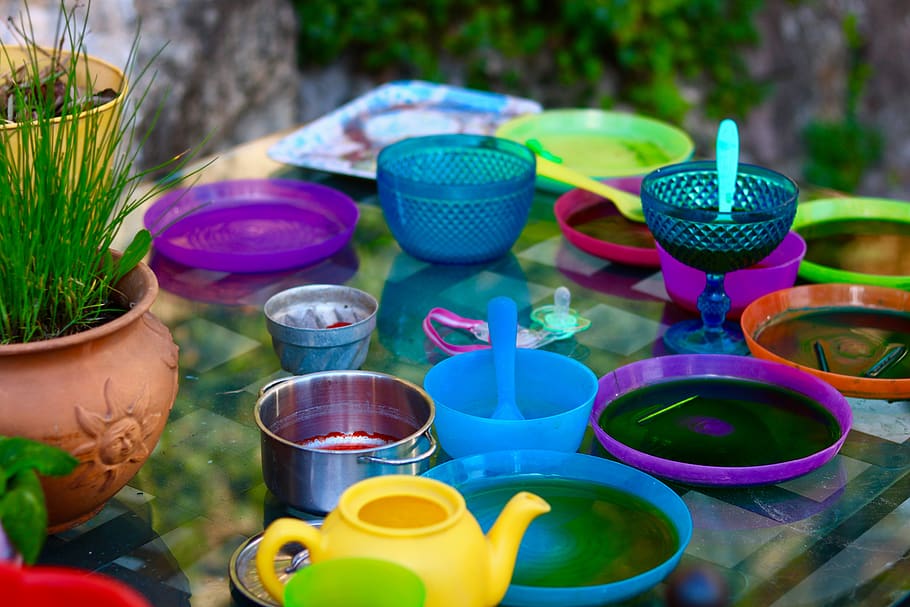Ever wondered what happens to plastic spoons and forks after you have used them? There’s a big movement for fixing the mess made by plastic pollution in our seas and oceans and land. Find out if you can recycle those sporks today.
What to do with unused plastic utensils? What are the disadvantages of plastic cutlery?
The properties of plastic utensils can often make these plastic wares difficult or sometimes outright impossible to recycle.
How Do You Dispose of Plastic Utensils?
Very few countries have special facilities for recycling items like plastic spoons, forks, sporks, knives, etc. In fact, in Canada, the government tells people to bin these items (including plastic chopsticks) as they cannot be recycled. The main reason is they’re too small to be properly sorted at materials recovery facilities, making it problematic if they try to sort it.
Even a small quantity of the wrong resin can cause problems during the recycling process, rendering a big batch of plastic contaminated. This being the case, it’s not a good idea to “wish-cycle” these items. Please don’t add them to recycling bins and curbside deposits, as the MRF will throw these away. Not all plastics can be recycled or recycled easily.
MRFs are only interested in sorted Plastic and plastics in demand at the moment in recycled form. But to be fair to the recycling facilities, they’re not doing it simply because they want to. Many MRFs lack the sufficient number of personnel needed to sort all plastics properly.
Just imagine the volume of plastic waste they have to sort through daily. Plastic utensils need to be dispose of properly, otherwise they might end up in the ocean. While solid dumps aren’t exactly encouraging, they lessen the impact on our world’s oceans, which is already home to billions of tons of Plastic.
Why Is Plastic Cutlery Not Recyclable?
The main reason why plastic cutlery cannot be recycled is MRFs do not have the capacity to sort them properly. MRFs have to be very careful about what types of resins they deal with, as the different resin types have to be categorized and placed together before being recycled. Plastics cannot be mixed or combined in any sorting facility. Mixing can stall the recycling process and cause a batch to become useless. As you may already know, MRFs are tasked with producing durable plastics that can then be sold back to manufacturers. Therefore, they have to recover the materials properly, and the profit margins are just as important. There are many associated costs with recycling, including shipping and storage. There’s a reason why Styrofoam is hard to recycle, for instance. Styrofoam is mostly air, and it’s a pain to store it. The cost of storing Styrofoam beats the possible profit from recycling it. That’s why Styrofoam is mostly discarded and just transported to landfills.
What are plastic utensils made of?
The most common materials used for manufacturing plastic utensils are polystyrene and polypropylene.
How many plastic utensils end up in the ocean?
Plastic utensils belong to the top five of the worst plastic pollutants in the ocean today. Recent data shows that there are billions of plastic utensils in the ocean, as they are often discarded near beaches. Through flooding and erosion, they may be easily carried from the land to the sea because they are so light and float easily.
Another equally problematic plastic product is straws, which have been shown to harm ocean animal life so easily because they’re hard, they don’t break down, and they can easily puncture the sensitive flesh of marine life. Cleanup efforts are not so promising. Based on marine conservation groups’ recovery efforts, a small portion of the garbage swirling in the ocean includes 5.7 million pieces of cigarette butts, 3.7 million wrappers, and 2 million plastic cutlery.
While there isn’t so much plastic cutlery, considering that one million marine animals die yearly because of plastic pollution, we can only predict that the statistics will significantly increase in the coming years. Marine conservation groups encourage people to reduce their use of plastic utensils and hit the beaches to collect garbage to reduce the amount of Plastic being carried out to the sea.
What Plastic Can and Cannot Be Recycled?
The most easily recyclable type of Plastic is PET or PETE. This is the resin used for plastic bottles, like mineral water bottles or spring water bottles. Soft drink bottles are also manufactured from PET/PETE and can easily be recycled. Next in line are HDPE bottles and containers. Shampoo containers are often made of HDPE. Common household cleaning agents are also put in HDPE containers. Like bags, carpets, and toys, PVC products cannot be recycled for the most part. Plastics like LDPE, PP, and PS can sometimes be recycled, depending on the materials recovery facility’s capacity.
Where Do Plastic Utensils Go?
Recycling facilities do not accept the majority of plastic utensils, and therefore, they cannot be added to recycling bins. Depositing them in curbside recycling bins doesn’t do anything because they will be removed by workers at the MRF and thrown away. Therefore, the best approach is to throw them away properly to be brought to a nearby landfill. This is better than your plastic utensils eventually reaching the ocean. When you are dining anywhere near the ocean, you must dispose of plastic utensils properly because the distance to the ocean is shorter, so the chances of garbage being recovered there are high. Plastic is very lightweight, and it can be brought to see far more easily than other types of garbage, say like metals and wood.
Two plastics classes can be readily thrown into curbside deposit bins – plastics marked with either a one or a two. You will have to check with your MRF for the other types of plastics if they do process those. Plastics are classified from 1-7, and what is recycled in your city depends largely on your MRFs process.


